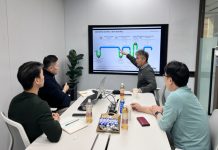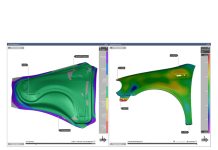The Digital Process Model for Stamping and Body-in-White Assembly (Part 2)
TThe future is digital. It’s better to futureproof yourself and join the digital transformation! This is part two in this series of blog posts on digitalization of the automotive industry by introducing the fully digital process chain for stamping and BiW assembly necessary for untapping and demonstrating the potential of end-to-end process optimization. You can read the first part of this series here.
The organizational disconnect described in the previous blog can be resolved by connecting the silos through digital transformation. The solution is to use a single software platform and one single process model for all departments and suppliers. Software workflow enabling digitalization of the entire engineering and planning of the stamping process, such as that offered by AutoForm, are available (see Figure 2). The use of such platforms makes it possible to share information, data, and experience seamlessly and efficiently, not only within an organization but also with suppliers and other external stakeholders. Engineering know-how and insights created early in the process can thus be shared upstream and downstream, leading to improved internal and external cooperation, improved process effectiveness and efficiency, improved product quality, and reduced lead times and development costs.

Fig. 1: From reactive trouble, loss of data and information, and silo effects…

Figure 2: …to full digitalization, seamless information and data flow.
Later on this year, AutoForm will introduce the next phase of digitalization in the stamping and BiW body engineering process chain. A new software solution will enable the automotive industry to execute all tasks associated with the stamping and BiW assembly processes. The full digitalization and integration of both the stamping and BiW assembly processes create significant tangible value. In addition, the improved collaboration between departments and seamless data and information flow prevent loss of information and data – and lead to a significantly accelerated development process and shorter turnaround times. By enabling the identification and correction of issues early in the process – as opposed to fixing them downstream – costs are dramatically reduced resp. avoided.
The Full Digitalization as the Enabler
It was noted in the previous section that from a software technology perspective, software tools that allow the full digitalization of the stamping and BiW assembly processes make it possible for the automotive industry to streamline their way of working by introducing the concept of a fully digitalized workflow based on complete transparency of data and decision making processes.
First, the digital customer process, as introduced in Figure 3, is divided into eight typical process chain tasks performed in the digital planning process for stamping and BiW assembly (see Figure 3). While progressing in these tasks and increasing the maturity of a process, various value drivers, including costs, quality, and lead time, play key roles.
AutoForm provides a range of software products integrated in a single software solution intended to help customers complete all eight tasks and ensure seamless data transfer in the entire process. To embed AutoForm’s software system in customers’ processes for maximum benefit, it needs to be connected to other software systems such as computer-aided design (CAD) software, product lifecycle management (PLM) software, computer-aided manufacturing (CAM) software, enterprise resource planning (ERP) software and manufacturing execution systems (MES).
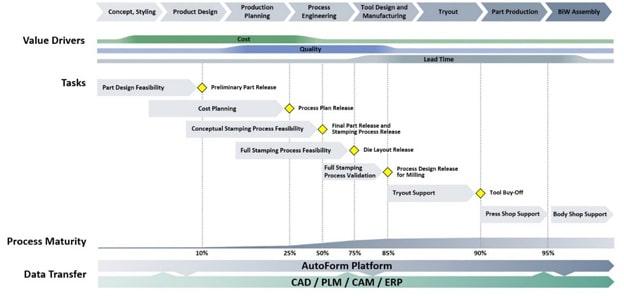
Fig. 3: Digital planning process and value drivers
As indicated in the first part of this blog series, a major technology trend in the automotive industry is the increased adoption and usage of digitalization technology.
A process model used for process simulation – in the context of stamping and BiW assembly processes – is a description of the physical process that can be used for various purposes, such as planning, engineering, process optimization, and the prediction of downstream production process issues. During the execution of the eight customer tasks depicted in Figure 3, a complete digital process description of the stamping and BiW assembly processes is created piece by piece. The resulting process model is based on a scientific understanding of the process physics, making it possible to model causalities and to predict outcomes. Hence, possible issues in the tool, press, and/or body shops can already be resolved in the engineering phase of the process – while the effort of making changes is low and the process design space is still generous.
The concept of building a process model considering all relevant physics is further explained and visualized in Figure 4. The maturity of the process and the refinement of the process model increase throughout the process.
The transition from the virtual to the physical world takes place once the tool design is complete and the tooling manufacturing is initiated; that is, this is the point where the creation of the physical process is initiated. In the virtual world, there is the possibility of optimizing the costs and risks associated with the stamping process, which is indicated by the green line in Figure 4. The costs of process adjustments are low in this virtual world, as processes can be optimized and adjustments can be analyzed virtually. As soon as the process progresses into the physical world, the costs of process adjustments increase (as indicated by the red line), and the ability to optimize costs and risks decreases significantly (indicated by the green line). In other words, the digital process model enables the virtual evaluation of the stamping and assembly process, making it possible to optimize costs and minimize risk in the virtual world and virtually avoid possible problems early in the process.
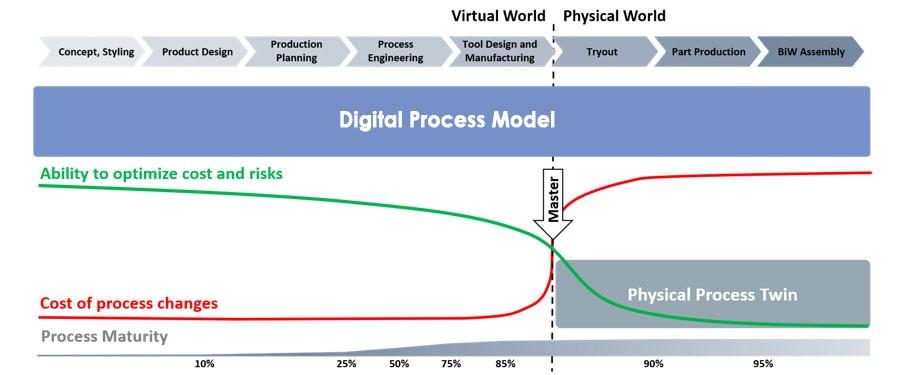
Fig. 4: The digital process and physical process models
The physical tools and processes should match and be built exactly according to the digital process model to maximally benefit from the latter. By exploiting the digital proces model in the physical processes, organizations are able to respond in a more agile and resilient manner to possible issues through immediate feedback loops and iterations between the physical and digital process representations. Additionally, actual measurement and process data of the physical tools and processes can be fed back into the digital model to enrich it and close the gap between the physical and virtual worlds. As a result, all processes are aligned with a clear focus on producing a high-quality BiW at minimum cost and lead time.
In the current approach to working in the industry, automotive OEMs use digital process models and exchange data and information between departments to a certain extent until the transition point between the virtual and physical worlds. This is the point where they tend to stop relying on the digital process model and where synchronization failures between engineering (in the virtual world) and tryout (in the physical world) are introduced. In other words, what is engineered in the virtual world is often not actually consistently replicated in reality. Engineering departments may not consider real-life constraints in their virtual evaluations, while technicians in the tool and press shops may completely unaware of or ignore the engineering intent and improvise based on their experiences of the physical process.
As a result, the virtual and physical process representations are disconnected, leading to a situation where the relevance of the digital model for the actual production process is diminished – and, in the worst case, completely destroyed. This results in misunderstandings, duplicate work and significant efforts for trouble-shooting, leading to time investments, and high costs in customers’ tryout and production phases.
Hence, only by matching the physical process with the digital model can automotive OEMs maximally leverage data and information concerning the entire process in the physical world and benefit from full digitalization of their working processes. This is no small challenge.
The digital process model can thus serve as a connection between the engineering department and the tool, press, and body shops. That is, the digital model can enable direct bi-directional communication among departments by serving as the sole data and information carrier throughout the digital planning process. In fact, digital models from previous projects can be used as a starting base for new projects so as to increase efficiency and effectiveness over time through continuous enrichment and improvement processes.
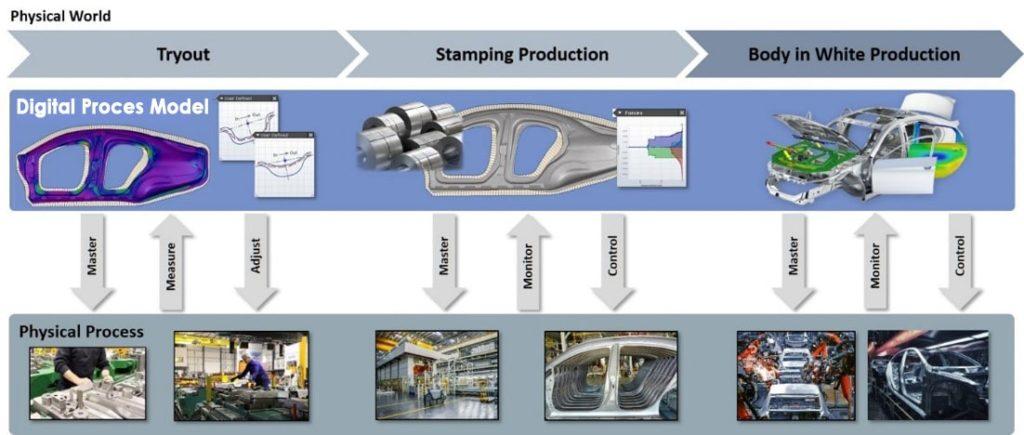
Fig. 5: A digital process model to set-up, monitor, and control the physical process
This section closes by describing the added value of a digital process model in the physical world in more detail. Following the virtual development of the stamping and BiW assembly process, manual correction loops in the physical world are still required to produce defect-free products within geometrical tolerance. In these correction loops, the tools are adjusted; however, these manual adjustments are extremely costly and time-consuming. The key to reducing the number of tryout and quality loops required and successfully bringing a process into production is the use of a digital process model, as depicted in Figure 5. A digital process representation has to be used as the blueprint of the physical process in the tryout and production of stampings and BiW assemblies. If there are problems in the physical world, the digital process model has to be used to determine which adjustments will need to be made to the physical process to monitor, control, and solve the problems efficiently and effectively. The greatest savings for customers can be achieved by reducing the number of tryout and quality loops and by efficiently and effectively proceeding to and maintaining a stable stamping and BiW assembly process.







